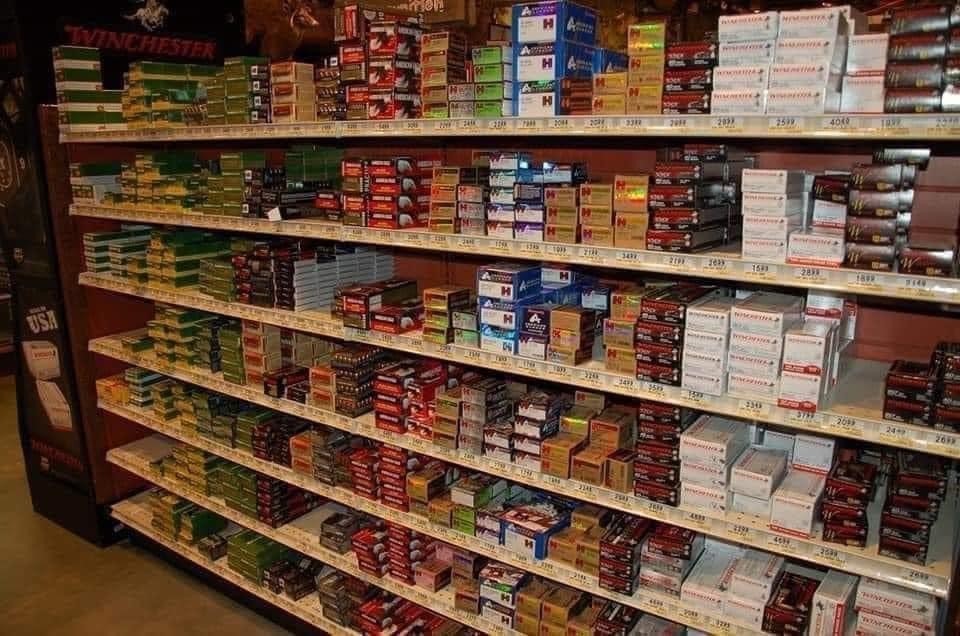These days, the ammo shortage is making finding ammunition a maddening affair. Should you manage to find some, figuring out how to afford it is a whole other issue. In the wake of the pandemic, civil unrest, and strife the last year has brought, more and more people have taken on the duty of protecting themselves. More legal, responsible gun owners is in no way a bad thing, but it is putting stress on an ammunition supply chain that is already taxed.

So, how do we go about dealing with the effects of the ammo shortage?
CONSOLIDATION
We’ve all been lured by the siren song of that new caliber that we’ve always wanted to add to the safe. You’ll find no judgement for that here. That said, in many cases we are our own worse enemy when it comes to the ammo shortage. We’re scrambling trying to find another box of this, or another 100 rounds of that, and we’re doing it for a dozen calibers.
Variety is the spice of life. That is certainly true in the gun safe.
There’s also something to be said for consolidation.
I have a core set of calibers and gauges that I prefer to use for my hunting and shooting activities. For the most part, I try to keep my firearm procurements narrowed to those core rounds. Originally, this started out as the desperate attempts of a not-wealthy man to keep himself from going ammo poor. Over time, I sort of adopted it as a strategy.
Don’t get me wrong, there are calibers I’d still like to have, but keeping consolidation in mind has kept me from spreading myself too thin, across too many different firearms to be able to deploy any of them effectively.
Maybe now is a good time to look at moving on from some of the calibers you don’t find the time or use for you thought you would. Perhaps putting off adding a new caliber to the mix would be wise. If you are dead set on adding another firearm, maybe do it in a caliber you already have on hand.
Considering the status of the ammo shelves of late, you might not have a choice in that anyway.
REDUNDANCY
The role redundancy plays in dealing with the ammo shortage cuts both ways. As a positive, you can use redundancy to maximize the number of firearms you can deploy with a particular round by just having more options in a given caliber. As a negative, it’s possible you have too many rounds that essentially do the same thing. Meaning you’re stacking up piles of ammunition that aren’t bringing anything new to the table.
I’m struggling with this right now.
I have a .30-06 rifle that I haven’t used for a while. I have always been a fan of the caliber and the versatility that it offers. Not that long ago, however, I added an AR-10 platform to the gun safe chambered in .308.
Perhaps you see my dilemma.
While we can debate the merits of each caliber until the internet burns down, (my good friend Phil Massaro does just that here), for the way I like to construct my gun safe, there just isn’t much point in keeping it around. I want to move on from the .30-06 so I can focus my ammo acquisition efforts around a caliber that is more suited to platform redundancy, rather than stacking it up behind the .308 and creating a “these both do the same job” redundancy problem.
It’s tough to find a bolt rifle that doesn’t offer a .30-06 variant. The caliber is so good it’s almost boring. Find the .30-06 in other rifle configurations though, like a modern sporting rifle, is more difficult. Meanwhile, the .308/7.62×51 can be found in both traditional bolt and modern sporting rifle configurations. There are even crossover options like the MVP-series from Mossberg that use AR-10 magazines to feed a bolt gun platform.
That’s the kind of redundancy I’m talking about…
CONCLUSION
I’m not here to tell anyone how to spend their money. I’m certainly not here to tell anyone they don’t need another gun, or another caliber. Few things bring as much joy as getting a new firearm dialed in, or taking to the field to fill the freezer. You do what makes you happy.
But when it comes to dealing with the ammo shortage don’t be your own worst enemy.
WANT MORE?
Will Jenkins and I talked about this very topic on a recent episode of The Will to Hunt Podcast.
You can listen to a larger discussion about this topic there.
How do I choose the right caliber?
There is no easy answer to that question. Trial and error is the guide for most shooters. I’ve never bought a gun in a caliber I haven’t shot somewhere else before. Trying a caliber for yourself is the best way to know if you actually like to shoot it. Modern rounds all perform. People will argue and bicker about one over another, but ammo companies can’t afford to put duds on the shelves. Go shoot with friends. Try what they are shooting. Buy what you like.
How much ammo should I keep on hand?
Again, no easy answer. How you use your firearms is a good first step to determining how much ammo you need to keep on hand. If all you do is hunt or plink a few times a year, a few boxes might be enough. If you like spending a day at the range, you’re going to want to keep considerably more on hand. I know people who think a box is enough. I know people who panic if they get near a thousand rounds. Neither are right, and neither are wrong. As a general rule though, pick a number you think seems “safe,” and double it. That’s my advice.